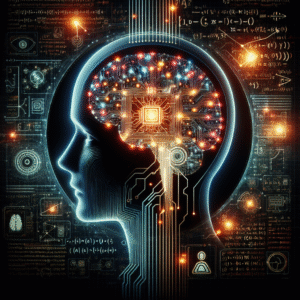Machine learning, a subfield of artificial intelligence, focuses on the development of algorithms that can learn from and make predictions or decisions based on data. This transformative technology powers various applications we encounter daily, from personalized recommendations to autonomous vehicles. In this article, we delve into the core concepts, techniques, and real-world applications of machine learning, presenting them in a simplified manner to demystify their complexity.
Core Concepts of Machine Learning
1. What is Machine Learning?
At its heart, machine learning involves training computers to recognize patterns and make decisions without explicit programming. Instead of writing code to handle every possible scenario, developers create models that a machine can train on vast amounts of data to learn how to perform tasks independently.
2. Types of Machine Learning
Machine learning encompasses several paradigms, each uniquely suited for different tasks:
-
Supervised Learning: This approach involves training a model on labeled data, where each training example comes with a known output. Algorithms learn the mapping between inputs and outputs, enabling them to make predictions about unseen data. Applications include spam detection and image classification.
-
Unsupervised Learning: Here, the data is unlabeled, and algorithms aim to find inherent structures within the dataset. Clustering and association are common tasks, utilized in market research or customer segmentation.
-
Semi-supervised Learning: This method combines labeled and unlabeled data during training. It’s especially useful when obtaining a fully labeled dataset is challenging or expensive.
- Reinforcement Learning: Models learn optimal actions through interaction with an environment. They receive feedback in the form of rewards or penalties, fine-tuning their strategies over time. Applications include game playing, like AlphaGo, and robotics.
3. Key Algorithms and Techniques
Several algorithms form the backbone of machine learning:
-
Linear Regression: A foundational algorithm used in predictive modeling. It models the relationship between a dependent variable and one or more independent variables.
-
Decision Trees: These are tree-like models used for classification and regression. They break down decisions into a series of binary choices, akin to a flowchart.
-
Neural Networks: Inspired by the human brain, these models consist of interconnected nodes (neurons) that process data through layers. Deep learning, a subset of machine learning, uses large neural networks for complex tasks like image and speech recognition.
-
Support Vector Machines (SVM): These are used for classification tasks by finding the hyperplane that best separates data into classes.
- K-Means Clustering: A popular unsupervised learning technique, k-means groups data into clusters based on feature similarity.
Applications of Machine Learning
Machine learning’s versatility has led to its adoption across various fields:
1. Healthcare
In healthcare, machine learning is revolutionizing diagnostics, personalized medicine, and patient care:
-
Diagnostics: Algorithms analyze medical images, assisting in the detection of conditions like cancer or diabetic retinopathy with high accuracy.
-
Predictive Analytics: Predicting patient outcomes, such as readmission rates and potential complications, helps improve treatment plans.
- Drug Discovery: Accelerating the development of new medications by identifying promising drug candidates through pattern recognition.
2. Finance
The finance sector leverages machine learning for better risk management and customer service:
-
Fraud Detection: Real-time analytics identify suspicious activities, reducing fraudulent transactions.
-
Algorithmic Trading: Strategies generated by machine learning models analyze large datasets to make profitable trading decisions.
- Customer Segmentation: Personalized banking services are crafted by understanding consumer behavior trends.
3. Retail
Retailers use machine learning to enhance customer experiences and streamline operations:
-
Recommendation Systems: By analyzing browsing and purchase history, retailers offer personalized product recommendations.
-
Inventory Management: Machine learning predicts sales trends, optimizing stock levels and reducing waste.
- Pricing Strategies: Dynamic pricing models adjust prices in real time based on demand and competitor actions.
4. Transportation
Machine learning plays a critical role in the advancement of autonomous vehicles and logistics:
-
Self-Driving Cars: Autonomy relies on machine learning for object recognition, decision-making, and route optimization.
-
Predictive Maintenance: Algorithms forecast vehicle maintenance needs, reducing downtime and increasing efficiency.
- Supply Chain Optimization: Enhanced logistics planning minimizes delivery times and costs by predicting demand and optimizing routes.
5. Natural Language Processing (NLP)
NLP enables machines to understand and generate human language:
-
Chatbots and Virtual Assistants: These systems improve customer service through instant, automated responses.
-
Sentiment Analysis: Machine learning models analyze text data from social media or reviews to gauge public sentiment.
- Language Translation: Real-time translation services break down language barriers, enhancing communication.
Challenges and Ethical Considerations
While machine learning offers immense potential, it also presents several challenges and ethical concerns:
1. Data Privacy
The collection and use of vast amounts of data raise privacy concerns. Ensuring data security and user consent is paramount.
2. Bias and Fairness
Models may inadvertently reflect societal biases present in their training data. Addressing bias is crucial to ensure fair and equitable outcomes.
3. Interpretability
Complex models, especially deep learning systems, often act as "black boxes," making it difficult to interpret their decision-making processes.
4. Job Displacement
Automation through machine learning has the potential to displace certain job roles. Preparing the workforce for this shift is essential.
Conclusion
Machine learning continues to reshape industries and everyday experiences. As technology advances, it is critical to balance its tremendous benefits with thoughtful consideration of ethical implications. By understanding and harnessing the power of machine learning, we can drive innovation while maintaining societal wellbeing. Through ongoing research and collaboration, the potential for machine learning to solve complex problems and improve lives remains boundless.




